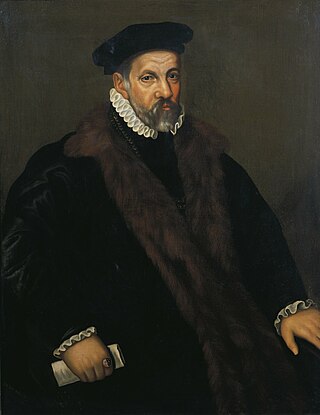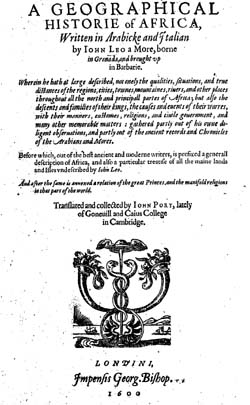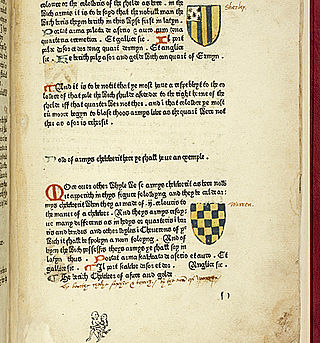Related Research Articles

William Oldys was an English antiquarian and bibliographer.
In heraldry, or is the tincture of gold and, together with argent (silver), belongs to the class of light tinctures called "metals", or light colours. In engravings and line drawings, it is hatched using a field of evenly spaced dots. It is very frequently depicted as yellow, though gold leaf was used in many illuminated manuscripts and more extravagant rolls of arms.

Sir Nicholas Hyde was Lord Chief Justice of England.
Sir Robert Bell SL of Beaupré Hall, Norfolk, was a Speaker of the House of Commons (1572–1576), who served during the reign of Queen Elizabeth I.
Arthur Brooke was an English poet who wrote and created various works including The Tragical History of Romeus and Juliet (1562), considered to be William Shakespeare's chief source for his tragedy Romeo and Juliet.

Sir Thomas Bromley was a 16th-century lawyer, judge and politician who established himself in the mid-Tudor period and rose to prominence during the reign of Elizabeth I. He was successively Solicitor General and Lord Chancellor of England. He presided over the trial of Mary, Queen of Scots and died three months after her execution.
Benedict Barnham was a London merchant, alderman and sheriff of London and MP.

Sir Roger Manwood (1525–1592) was an English jurist and Lord Chief Baron of the Exchequer.

Thomas Wilson (1524–1581), Esquire, LL.D., was an English diplomat and judge who served as a privy councillor and Secretary of State (1577–81) to Queen Elizabeth I. He is remembered especially for his Logique (1551) and The Arte of Rhetorique (1553), which have been called "the first complete works on logic and rhetoric in English".

John Pory (1572–1636) was an English politician, administrator, traveller and author of the Jacobean and Caroline eras; the skilled linguist may have been the first news correspondent in English-language journalism. As the first Speaker of the Virginia General Assembly, Pory established parliamentary procedures for that legislative body still in use today.

Randle Holme was a name shared by members of four successive generations of a family who lived in Chester, Cheshire, England from the late years of the 16th century to the early years of the 18th century. They were all herald painters and genealogists and were members of the Stationers' Company of Chester. All four painted memorial boards and hatchments, and some of these can still be found in Cheshire churches.

Sir Gilbert Gerard was a prominent lawyer, politician, and landowner of the Tudor period. He was returned six times as a member of the English parliament for four different constituencies. He was Attorney-General for more than twenty years during the reign of Elizabeth I, as well as vice-chancellor of the Duchy of Lancaster, and later served as Master of the Rolls. He acquired large estates, mainly in Lancashire and Staffordshire.
Sir Thomas Gawdy SL was an English justice and Member of Parliament. He was a member of the Norfolk family of Gawdy, of whom many were lawyers during the 16th and 17th centuries. He was Recorder of Norwich for 16 years. His seat was at Gawdy Hall, Harleston, a grand mansion which, in its final state, was demolished in 1939.
Walter Haddon LL.D. (1515–1572) was an English civil lawyer, much involved in church and university affairs under Edward VI, Queen Mary, and Elizabeth I. He was a University of Cambridge humanist and reformer, and was highly reputed in his time as a Latinist. He sat as an MP during the reigns of Mary and Elizabeth. His controversial exchange with the Portuguese historian Jerónimo Osório attracted international attention partly on account of the scholarly reputations of the protagonists.
William Flower (1497/98–1588) was an English Officer of Arms in the reigns of Henry VIII, Edward VI, Mary I and Elizabeth I. He rose to the rank of Norroy King of Arms, serving in that capacity from 1562 until his death in 1588.

Robert Cooke was an English Officer of Arms during the reign of Elizabeth I, who rose swiftly through the ranks of the College of Arms to Clarenceux King of Arms, serving in that office from 1567 until his death in 1592–3.
Sir Thomas Lodge, was Lord Mayor of London.

The Book of Saint Albans, or Boke of Seynt Albans, is the common title of a book printed in 1486 that is a compilation of matters relating to the interests of the time of a gentleman. It was the last of eight books printed by the St Albans Press in England. It is also known by titles that are more accurate, such as "The Book of Hawking, Hunting, and Blasing of Arms". The printer is sometimes called the Schoolmaster Printer. This edition credits the book, or at least the part on hunting, to Juliana Berners as there is an attribution at the end of the 1486 edition reading: "Explicit Dam Julyans Barnes in her boke of huntyng".
Sir William Chester was one of the leading English Merchants of the Staple and Merchant Adventurers of the mid-16th century, five times Master of the Worshipful Company of Drapers, Lord Mayor of London in the year 1560–61 and Member of Parliament for the City of London. He should not be confused with his contemporary, William Chester, merchant of Bristol, M.P.
John Bossewell was an English heraldic writer.
References
- ↑ J. P. Cooper, Ideas of Gentility, p. 58 in Land, Men and Beliefs: Studies in Early-Modern History (1983).
- ↑ Day, J. F. R. "Bossewell, John". Oxford Dictionary of National Biography (online ed.). Oxford University Press. doi:10.1093/ref:odnb/2938.(Subscription or UK public library membership required.)
Attribution
![]() This article incorporates text from a publication now in the public domain : Lee, Sidney, ed. (1892). "Legh, Gerard". Dictionary of National Biography . Vol. 32. London: Smith, Elder & Co.
This article incorporates text from a publication now in the public domain : Lee, Sidney, ed. (1892). "Legh, Gerard". Dictionary of National Biography . Vol. 32. London: Smith, Elder & Co.